GST 700 Professional
Original instructions
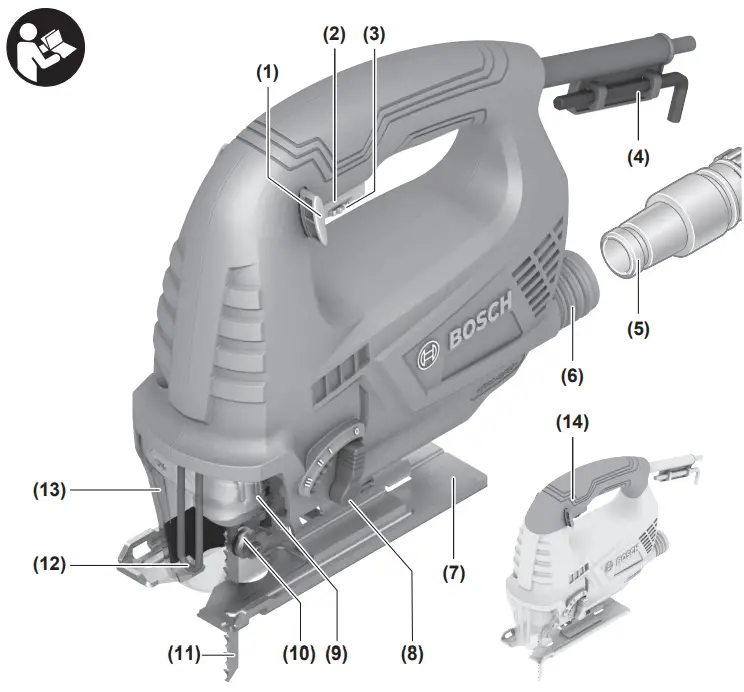
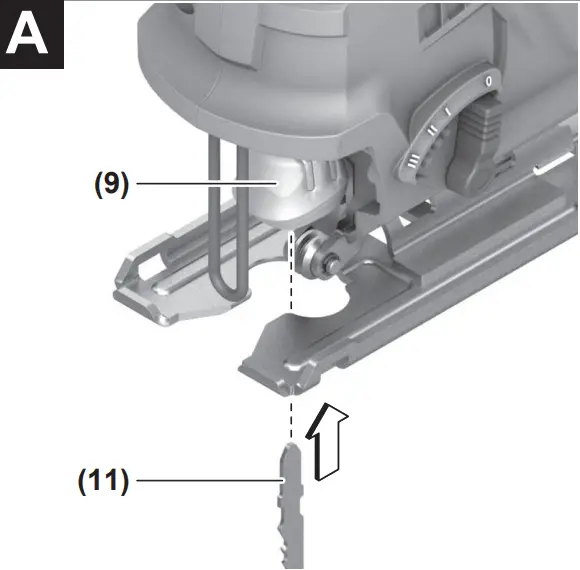 |
 |
 |
 |
 |
|
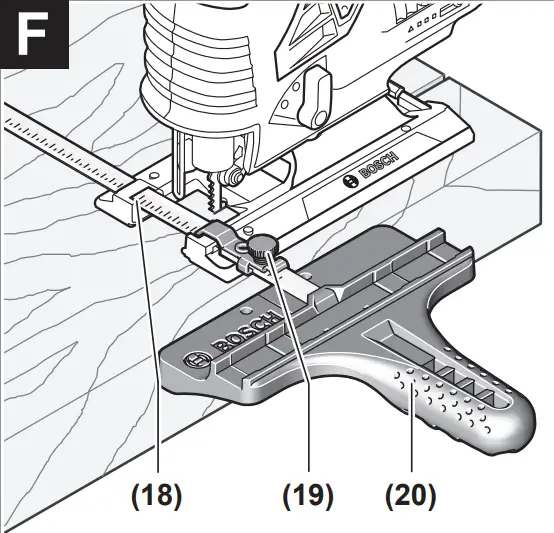 |
 |
Safety instructions
General Power Tool Safety Warnings
 WARNING Read all safety warnings, instructions, illustrations, and specifications provided with this power tool. Failure to follow all instructions listed below may result in electric shock, fire, and/or serious injury.
WARNING Read all safety warnings, instructions, illustrations, and specifications provided with this power tool. Failure to follow all instructions listed below may result in electric shock, fire, and/or serious injury.
Save all warnings and instructions for future reference. The term “power tool” in the warnings refers to your mains-operated (corded) power tool or battery-operated(cordless) power tool.
Work area safety
- Keep the work area clean and well-lit. Cluttered or dark areas invite accidents.
- Do not operate power tools in explosive atmospheres, such as in the presence of flammable liquids, gases, or dust. Power tools create sparks that may ignite dustor fumes.
- Keep children and bystanders away while operating a power tool. Distractions can cause you to lose control.
Electrical safety
- Power tool plugs must match the outlet. Never modify the plug in any way. Do not use any adapter plugs with earthed (grounded) power tools. Unmodified plugs and matching outlets will reduce the risk of electric shock.
- Avoid body contact with earthed or grounded surfaces, such as pipes, radiators, ranges, and refrigerators. There is an increased risk of electric shock if yourthe body is earthed or grounded.
- Do not expose power tools to rain or wet conditions. Water entering a power tool will increase the risk of electric shock.
- Do not abuse the cord. Never use the cord for carrying, pulling, or unplugging the power tool. Keep cord away from heat, oil, sharp edges, or moving parts.Damaged or entangled cords increase the risk of electric shock.
- When operating a power tool outdoors, use an extension cord suitable for outdoor use. suitable for outdoor use reduces the risk of electric shock.
- If operating a power tool in a damp location is unavoidable, use a residual current device (RCD) protected-ted supply. The use of an RCD reduces the risk of electric shock.
Personal safety
- Stay alert, watch what you are doing, and use common sense when operating a power tool. Do not use a power tool while you are tired or under the influenceof drugs, alcohol, or medication. A moment of inattention while operating power tools may result in serious personal injury.
- Use personal protective equipment. Always wear eye protection. Protective equipment such as a dust mask, non-skid safety shoes, hard hat, or hearing protectionused for appropriate conditions will reduce personal injuries.
- Prevent unintentional starting. Ensure the switch is in the off-position before connecting to a power source and/or battery pack, picking up or carrying the tool. Carrying power tools with your finger on the switch or energizing power tools that have the switch on invites accidents.
- Remove any adjusting key or wrench before turning the power tool on. A wrench or a key left attached to a rotating part of the power tool may result in personal injury.
- Do not overreach. Keep proper footing and balance at all times. This enables better control of the power tool in unexpected situations.
- Dress properly. Do not wear loose clothing or jewelry. Keep your hair and clothing away from moving parts. Loose clothes, jewelry, or long hair can be caughtin moving parts.
- If devices are provided for the connection of dust ex- traction and collection facilities, ensure these are connected and properly used. The use of dust collection can reduce dust-related hazards.
- Do not let familiarity gained from frequent use of tools allow you to become complacent and ignore tool safety principles. A careless action can cause severe injury within a fraction of a second. Power tool use and care
- Do not force the power tool. Use the correct power tool for your application. The correct power tool will do the job better and safer at the rate at which it was designed.
- Do not use the power tool if the switch does not turn on and off. Any power tool that cannot be controlled with the switch is dangerous and must be repaired.
- Disconnect the plug from the power source and/or remove the battery pack, if detachable, from the power tool before making any adjustments, changingaccessories, or storing power tools. Such preventive safety measures reduce the risk of starting the power tool accidentally.
- Store idle power tools out of the reach of children and do not allow persons unfamiliar with the power tool or these instructions to operate the power tool. Power tools are dangerous in the hands of untrained users.
- Maintain power tools and accessories. Check for misalignment or binding of moving parts, breakage of parts, and any other condition that may affect thepower tool’s operation. If damaged, have the power tool repaired before use. Many accidents are caused by poorly maintained power tools.
- Keep cutting tools sharp and clean. Properly maintained cutting tools with sharp cutting edges are less likely to bind and are easier to control.
- Use the power tool, accessories and tool bits, etc. in accordance with these instructions, taking into account the working conditions and the work to be performed. Use of the power tool for operations different from those intended could result in a hazardous situation.
- Keep handles and grasping surfaces dry, clean, and free from oil and grease. Slippery handles and grasping surfaces do not allow for safe handling and control of thetool in unexpected situations.
Service
- Have your power tool serviced by a qualified repair person using only identical replacement parts. This will ensure that the safety of the power tool is maintained.
Safety instructions for jigsaws
- Hold the power tool by insulated gripping surfaces, when performing an operation where the cutting accessory may contact hidden wiring or its own cord. Cutting accessory contacting a “live” wire may make exposed metal parts of the power tool “live” and could give the operator an electric shock.
- Use clamps or another practical way to secure and support the workpiece to a stable platform. Holding the workpiece by hand or against your body leaves it unstable and may lead to loss of control.
- Keep hands away from the sawing area. Do not reach under the workpiece. Contact with the saw blade can lead to injuries.
- Only bring the power tool into contact with the workpiece when switched on. Otherwise, there is a danger of kickback if the cutting tool jams in the workpiece.
- Ensure that the footplate always rests securely while sewing. A jammed saw blade can break or lead to kickback.
- When the cut is completed, switch off the power tool and then pull the saw blade out of the cut only after it has come to a standstill. In this manner, you can avoid kickback and can place down the power tool securely.
- Always wait until the power tool has come to a complete stop before placing it down. The application tool can jam and cause you to lose control of the power tool.
- Use only undamaged saw blades that are in perfect condition. Bent or dull saw blades can break, negatively influence the cut, or lead to kickback.
- Do not brake the saw blade to a stop by applying side pressure after switching off. The saw blade can be damaged, break or cause kickback.
- Use suitable detectors to determine if utility lines are hidden in the work area or call the local utility company for assistance. Contact with electric lines can lead to fire and electric shock. Damaging a gas line can lead to an explosion. Penetrating a water line causes property damage or may cause an electric shock.
Products sold in GB only:Your product is fitted with a BS 1363/A approved electric plug with an internal fuse (ASTA approved to BS 1362). If the plug is not suitable for your socket outlets, it should becut off and an appropriate plug fitted in its place by an authorized customer service agent. The replacement plug should have the same fuse rating as the original plug. The severed plug must be disposed of to avoid a possible shock hazard and should never be inserted into the main socket elsewhere.
Product Description and Specifications
 Read all the safety and general instructions.Failure to observe the safety and general instructions may result in electric shock, fire, and/or serious injury. Please observe the illustrations at the beginning of this operating manual.
Read all the safety and general instructions.Failure to observe the safety and general instructions may result in electric shock, fire, and/or serious injury. Please observe the illustrations at the beginning of this operating manual.
Intended Use
The power tool is intended for making separating cuts and cut-outs in wood, plastic, metal, ceramic plates, and rubber while resting firmly on the workpiece. It is suitable forstraight and curved cuts with miter/bevel angles of up to 45°. Note the saw blade recommendations.
Product Features
The numbering of the product features refers to the diagram of the power tool on the graphics page.
| (1) On/off switch locking mechanism | (12) Shock protection guard |
| (2) On/off switch | (13) Hood for dust extraction |
| (3) Stroke rate preselection thumbwheel | (14) Handle (insulated gripping surface) |
| (4) Hex key | (15) Anti-splinter guard a) |
| (5) Extraction Hosea) | (16) Baseplate screw |
| (6) Extraction outlet | (17) Scale for miter/bevel angles |
| (7) Baseplate | (18) Guide for the parallel guide |
| (8) Pendulum action adjusting lever | (19) Locking screw for parallel guide) |
| (9) Saw blade receptacle | (20) Parallel guide with a circle cutter) |
| (10) Guide roller | (21) Circle cutter centering tip) |
| (11) Saw blades) |
a) Accessories shown or described are not included with the product as standard. You can find the complete selection of accessories in our accessories range.
Technical Data
| Jigsaw | GST 700 | |
| Article number | 3 601 BA7 0.. | |
| Rated power input | W | 500 |
| No-load stroke rate no | min¹ | 1450-3200 |
| Stroke | mm | 20 |
| Max. cutting depth | ||
| — Inwood | mm | 70 |
| — In aluminum | mm | 10 |
| — In steel (unalloyed) | mm | 6 |
| Max. cutting angle (left/ right) | 0 | 45 |
| Weight according to
EPTA-Procedure 01:2014 |
kg | 2.1 |
| Protection class |
The specifications apply to a rated voltage [U] of 230 V. These specifications may vary at different voltages and in country-specific models.
Noise/Vibration Information
Noise emission values determined according to62841‑2‑11.Typically, the A-weighted noise level of the power tool is:Sound pressure level 86 dB(A); sound power level97 dB(A). Uncertainty K = 5 dB.Wear hearing protection!Vibration total values ah (triax vector sum) and uncertainty Kdetermined according to 62841‑2‑11:Cutting boards with saw blade T 111 C:
ah,B = 3.5 m/s², K = 1.5 m/s²cutting sheet metal with saw blade T 118 A:
ah,M = 3.5 m/s2, K = 1.5 m/s2
The vibration level and noise emission value given in these instructions have been measured in accordance with a standardized measuring procedure and may be used to compare power tools. They may also be used for a preliminary estimation of vibration and noise emissions.The stated vibration level and noise emission value represent the main applications of the power tool. However, if the power tool is used for other applications, with differentapplication tools or is poorly maintained, the vibration level and noise emission value may differ. This may significantly increase the vibration and noise emissions over the totalworking period.
To estimate vibration and noise emissions accurately, the times when the tool is switched off or when it is running but not actually being used should also be taken into account.This may significantly reduce vibration and noise emissions over the total working period.
Implement additional safety measures to protect the operator from the effects of vibration, such as servicing the power tool and application tools, keeping their hands warm,and organizing workflows correctly.
Assembly
- Pull the plug out of the socket before carrying out any work on the power tool.
Inserting/changing the saw blade
- When fitting or changing the saw blade, wear protective gloves. Blades are sharp and can become hot when used for prolonged periods of time.Selecting the saw bladeYou will find an overview of recommended saw blades at the end of these operating instructions. Only use saw blades with a single lug shank (T shank). The saw blade should not be longer than required for the intended cut. Use a narrow saw blade when sawing tight curves.
Inserting the saw blade (see figure A)
- Clean the shaft on the saw blade before inserting it.A dirty shaft cannot be securely fixed in place. Push the saw blade (11), with the teeth in the cutting direction, into the saw blade receptacle (9) until it clicks into place.Make sure when inserting the saw blade that the back of the saw blade is in the groove on the guide roller (10).
- Check that the saw blade is seated securely. A loose saw blade can fall out and lead to injuries.
Removing the saw blade (see figure B)Push the saw blade receptacle (9) upwards in the direction of the arrow and remove the saw blade (11).
Anti-splinter guard (see figure C)The anti-splinter guard (15) (accessory) can prevent splintering of the surface while sawing wood. The anti-splinter guard can only be used with certain saw blade types andonly at a cutting angle of 0°.Push the anti-splinter guard (15) into the base plate (7) from below.
Dust/Chip ExtractionThe dust from materials such as lead paint, some types of wood, minerals, and metal can be harmful to human health. Touching or breathing in this dust can trigger allergic reach-tions and/or cause respiratory illnesses in the user or in people in the near vicinity.Certain dust, such as oak or beech dust, are classified as carcinogenic, especially in conjunction with wood treatment additives (chromate, wood preservative). Materials containing asbestos may only be machined by specialists.– Use a dust extraction system that is suitable for the material wherever possible.–Provide good ventilation at the workplace.– It is advisable to wear a P2 filter class breathing mask.The regulations on the material being machined that apply in the country of use must be observed.
- Avoid dust accumulation at the workplace. Dust can easily ignite.
HoodFit the hood (13) before you connect the power tool to the dust extraction system.Position the hood (13) on the power tool so that the brackets click into place in the recesses on the housing.Remove the hood (13) when working without a dust extraction system and for miter cuts. To do this, push the hood together at the level of the outer brackets and remove itby pulling it forwards.
Connecting the dust extraction systemConnect a dust extraction hose (5) (accessory) to the extraction outlet (6). Connect the dust extraction hose (5) to a dust extractor (accessory).You will find an overview of connecting to various dust extractors at the end of these operating instructions.For optimum dust extraction, where possible use the anti-splinter guard (15).The dust extractor must be suitable for the material being worked on.When extracting dry dust that is especially detrimental to health or carcinogenic, use a special dust extractor.
Operation
- Products that are only sold in AUS and NZ: Use a residual current device (RCD) with a nominal residualcurrentof 30 mA orless.
Operating modes
- Pull the plug out of the socket before carrying out any work on the power tool.
Pendulum action settingsThe pendulum action can be adjusted using four different settings, allowing the cutting speed, cutting capacity and the cut itself to be optimally adapted to the material that youwant to cut.
You can also adjust the pendulum action during operation using the adjusting lever (8).
Level 0 __________No pendulum actionLevel I___________Low pendulum actionLevel II__________Moderate pendulum actionLevel III_________High pendulum action
The optimum pendulum level for each application can be determined by a practical test. Note the following recommendations:
–Select a lower pendulum level or switch off the pendulum action completely if you wish to produce a finer or cleaner cutting edge.– Switch off the pendulum action when machining thin materials (e.g. sheets).–Work on hard materials (e.g. steel) with low pendulum action.–You can work on soft materials and saw wood in the direction of the grain using maximum pendulum action.
Adjusting the miter/bevel angle (see figure D)The base plate (7) can be swiveled to the right or left to make miter cuts up to 45°.The anti-splinter guard (15) cannot be used while miter cuts are being made.– Remove the anti-splinter guard (15).– Loosen the screw (16) and push the base plate (7) slightly towards the saw blade (11).– The base plate has lock-in points at 0° and 45° on the left and right so that precise miter/bevel angles can be set.Swivel the base plate (7) to the desired position according to the scale (17). Another miter/bevel angle can be adjusted using a protractor.– Then slide the base plate (7) all the way towards the main cable.– Retighten the screw (16).
Starting Operation
- Pay attention to the mains voltage. The voltage of the power source must match the voltage specified on the rating plate of the power tool. Power tools marked with 230 V can also be operated with 220 V.
Switching on/off
- Make sure that you are able to press the On/Off switch without releasing the handle.To switch on the power tool, press the on/off switch (2).To lock the on/off switch (2), keep it pressed down and push the locking mechanism (1) to the right or left.To switch off the power tool, release the on/off switch (2).If the on/off switch (2) is locked, press the switch first and then release it.
Preselect the stroke rateYou can also preselect the stroke rate and change it during operation using the stroke rate preselection thumbwheel (3).The required stroke rate is dependent on the material and the work conditions and can be determined using practice tests.
It is recommended that you reduce the stroke rate when placing the saw blade on the workpiece and when sawing plastic and aluminum.
During prolonged periods of use at a low stroke rate, the power tool may heat up significantly. Remove the saw blade and let the power tool run at the maximum stroke rate foraround three minutes to cool down.
Working Advice
- Pull the plug out of the socket before carrying out any work on the power tool.
- Switch the power tool off immediately if the saw blade becomes blocked.
- When machining small or thin workpieces, always use a stable base or saw table (accessory).
Before sawing into the wood, chipboard, building materials, etc., check for and remove any foreign objects such as nails, screws, etc.
Plunge cutting (see figure E)
- Plunge cuts may only be applied to soft materials, such as wood, gypsum board, etc.
For plunge cutting, use only short saw blades. Plunge cutting is possible only with a miter angle of 0°.Place the power tool so that the front edge of the base plate (7) rests on the workpiece, without the saw blade (11) touching the workpiece, and switch it on. On power toolswith stroke rate control, select the maximum stroke rate. Press the power tool firmly against the workpiece and allow the saw blade to plunge slowly into the workpiece.As soon as the base plate (7) rests fully on the workpiece, continue sawing along the required cutting line.
Parallel guide with a circle cutter (accessory)When working with the parallel guide with a circle cutter (20) (accessory), the workpiece must be no more than 30 mm thick.
Parallel cuts (see figure F): Loosen the locking screw (19) and slide the scale on the parallel guide through the guide (18) in the base plate. Adjust the desired cutting width as ascale value on the inside edge of the base plate. Retighten the locking screw (19).
Circular cuts (see figure G): Drill a hole large enough to push the saw blade through on the cutting line within the circle to be cut. Machine the drill hole with a router or file so that the saw blade can lie flush with the cutting line.Position the locking screw (19) on the other side of the parallel guide. Slide the scale on the parallel guide through the guide (18) into the base plate. Drill a hole in the workpiecein the middle of the section to be cut out. Insert the centering tip (21) through the inner opening of the parallel guide and into the drilled hole. Adjust the radius as a scale value on the inside edge of the base plate. Retighten the locking screw (19).
Coolant/lubricantAs the material heats up along the cutting line when cutting metal, you should apply coolant or lubricant.
Maintenance and Service
Maintenance and Cleaning
- Pull the plug out of the socket before carrying out any work on the power tool.
- To ensure safe and efficient operation, always keep the power tool and the ventilation slots clean.
In order to avoid safety hazards, if the power supply cord needs to be replaced, this must be done by Bosch or by an after-sales service center that is authorized to repair Boschpower tools.
Clean the saw blade receptacle regularly. For this, remove the saw blade from the power tool and lightly tap out the power tool on a level surface.
If the power tool becomes very dirty, this can lead to serious faults. For this reason, do not cut materials that generate large quantities of dust from below or overhead.
- In extreme conditions, always use a dust extractor if possible. Blow out ventilation slots frequently and install a residual current device (RCD) upstream.When machining metals, conductive dust can settle inside the power tool, which can affect its protective insulation.If the dust outlet becomes blocked, switch off the power tool, disconnect the dust extraction system and remove the dust and chips.Apply a drop of oil to the guide roller (10) from time to time.Check the guide roller (10) regularly. If worn, it must be replaced through an authorized Bosch after-sales service center.
After-Sales Service and Application ServiceOur after-sales service responds to your questions concerning maintenance and repair of your product as well as spare parts. You can find explosion drawings and information on spare parts at: www.bosch-pt.com
The Bosch product use advice team will be happy to help you with any questions about our products and their accessories.
In all correspondence and spare parts orders, please always include the 10‑digit article number given on the nameplate of the product.
Great BritainRobert Bosch Ltd. (B.S.C.) P.O. Box 98 Broadwater Park North Orbital Road Denham Uxbridge UB 9 5HJ At www.bosch-pt.co.uk you can order spare parts or arrange the collection of a product in need of servicing or repair.Tel. Service: (0344) 7360109E-Mail: [email protected]You can find further service addresses at:www.bosch-pt.com/serviceaddresses
Disposal
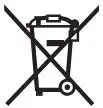 The power tool, accessories, and packaging should be recycled in an environmentally friendly manner.Do not dispose of power tools along with the household waste.
The power tool, accessories, and packaging should be recycled in an environmentally friendly manner.Do not dispose of power tools along with the household waste.
Only for EU countries:According to the European Directive 2012/19/EU on Waste Electrical and Electronic Equipment and its implementation into national law, power tools that are no longer usable must be collected separately and disposed of in an environmentally friendly manner.
 |
 |
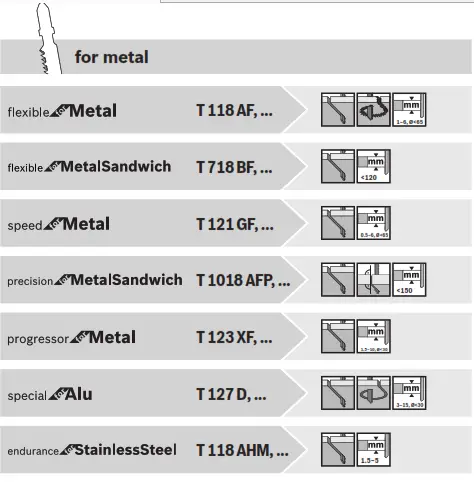 |
 |
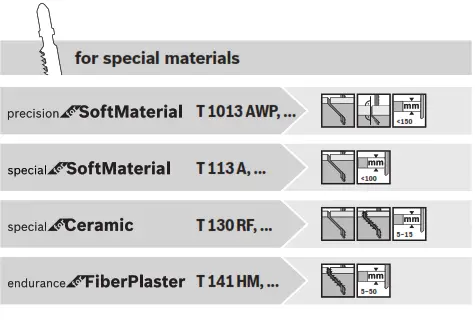 |
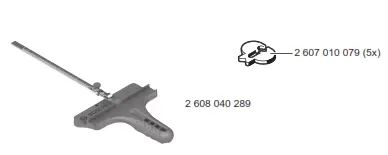

 Declaration of Conformity Declaration of Conformity |
We declare under our sole responsibility that the stated products comply
with all applicable provisions of the directives and regulations listed below and are in conformity with the following standards. Technical file at: * |
||
| Jigsaw | Article number | ||
| GST 700 | 3 601 BA7 0.. | 2006/42/EC
2014/30/EU 2011/65/EU |
EN 62841-1:2015
EN 62841-2-11:2016+A1:2020 EN 55014-1:2017+A11:2020 EN 55014-2:2015 EN IEC 61000-3-2:2019 EN 61000-3-3:2013+A1:2019 EN IEC 63000:2018 |
| * Robert Bosch Power Tools GmbH
(PT/ECS) 70538 Stuttgart GERMANY |
|||
| Henk Becker Chairman of
Executive Management |
Helmut Heinzelmann Head of Product Certification |
||
| Robert Bosch Power Tools GmbH, 70538 Stuttgart, GERMANY
Stuttgart, 09.11.2020 |
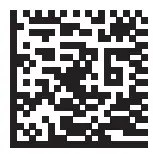 1 609 92A 5B4 (2021.01)
1 609 92A 5B4 (2021.01)
 Robert Bosch Power Tools GmbH70538 StuttgartGERMANYwww.bosch-pt.com1 609 92A 5B4 (2021.01) T / 193
Robert Bosch Power Tools GmbH70538 StuttgartGERMANYwww.bosch-pt.com1 609 92A 5B4 (2021.01) T / 193
References
Početna strana | Bosch u Srbiji
Bosch Power Tools | Bosch Power Tools
Elektrické náradie Bosch | Elektrické náradie Bosch
📧[email protected]
ÐлекÑÑоÑнÑÑÑÑменÑи Bosch | Bosch Professional
Ana Sayfa | Bosch Türkiye
Scule electrice Bosch | Scule electrice Bosch
Bosch-sähkötyökalut | Bosch-sähkötyökalut
📧[email protected]
ÐлекÑÑоинÑÑÑÑменÑÑ Bosch | Bosch Professional
📧[email protected]
📧[email protected]
Početna | Bosch u Hrvatskoj
Service worldwide
Bosch Elektrowerkzeuge und Zubehör | Bosch Elektrowerkzeuge
📧[email protected]
📧[email protected]
📧[email protected]
Domov | Bosch v Sloveniji
📧[email protected]
Elektronarzędzia Bosch | Elektronarzędzia Bosch
📧[email protected]
📧[email protected]
📧[email protected]
📧[email protected]
📧[email protected]
📧[email protected]
Select your country | Bosch Power Tools
📧[email protected]
📧[email protected]
bosch-pt.ru
Outillage électroportatif Bosch | Outillage électroportatif Bosch
Bosch el-værktøj | Bosch el-værktøj
📧[email protected]
Bosch elektromos kéziszerszámok | Bosch elektromos kéziszerszámok
[xyz-ips snippet=”download-snippet”]
